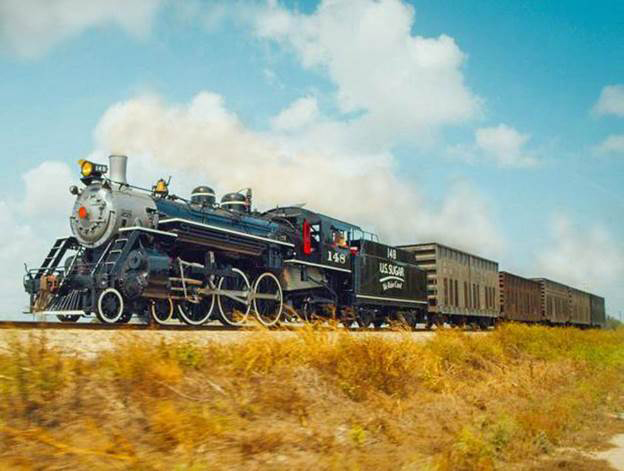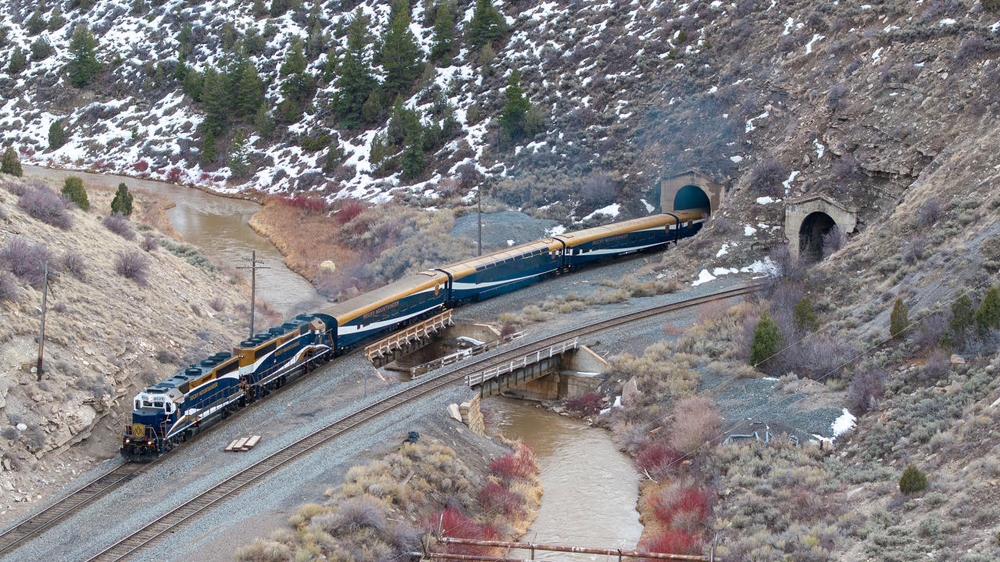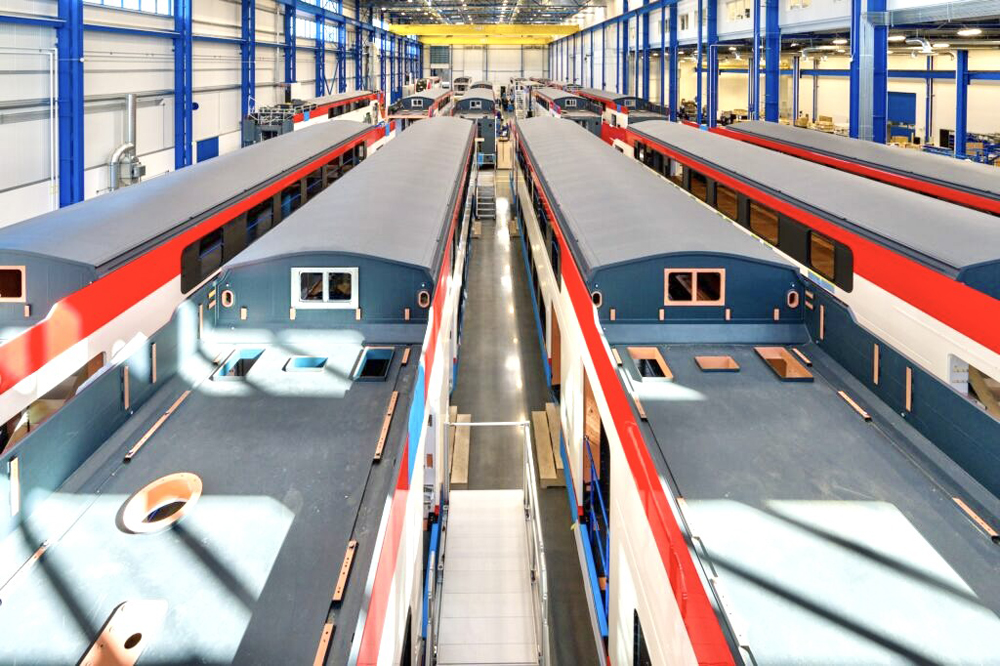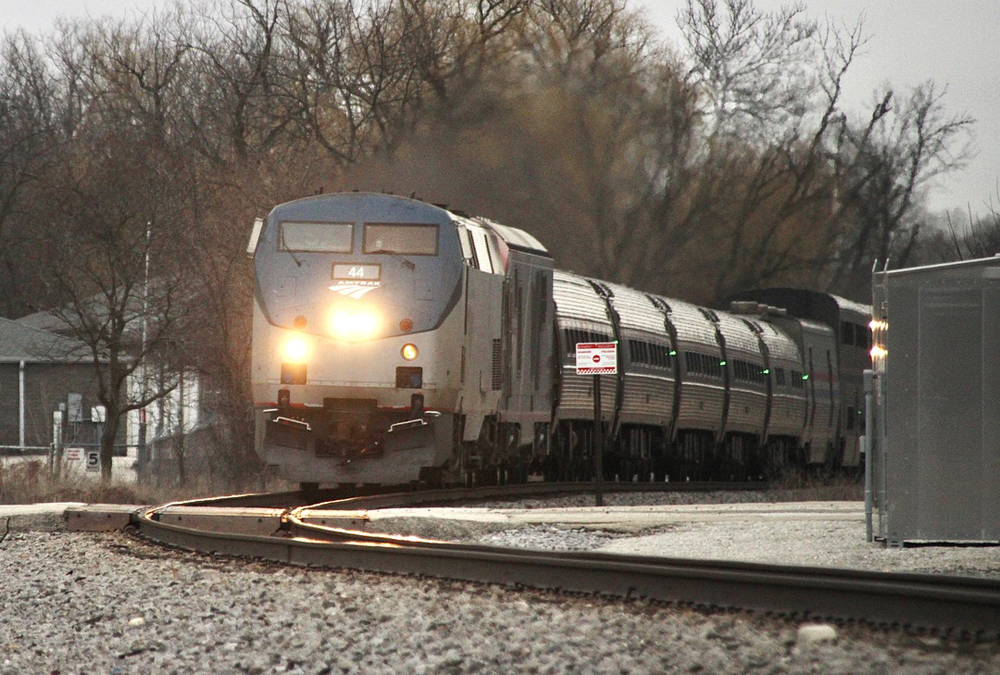More Friday morning rail news in brief:
U.S. Sugar uses steam locomotive on cane train, announces plans for ‘Sugar Express’
Restored U.S. Sugar 4-6-2 No. 148, a former Florida East Coast locomotive built by Alco in 1920, hauled a train of harvested sugar cane to a U.S. Sugar mill on Wednesday to mark the end of the 2019-20 harvest. It was the first steam-powered cane train on the sugar company’s railroad in more than 50 years. The event to mark the end of a 239-day harvest coincides with U.S. Sugar’s announcement of plans for the “Sugar Express,” excursion and special-event operations to feature the locomotive. “U.S. Sugar’s restoration of Engine No. 148 has been a tremendous source of pride for our employees, who have worked tirelessly over the past 4 years to bring this steam engine back to life,” Bob Lawson, general manager for U.S. Sugar Railroad Operations, said in a press release. “We look forward to the day when we can host members of the public on excursions to share our rich history with railroad enthusiasts, Florida residents and children alike.” The locomotive was returned to operating condition in April thanks to a restoration that began when U.S. Sugar repurchased No. 148 in 2016. More information on the locomotive and its operations is available on the Sugar Express website and Facebook page.
State legislators want to stop funding for California high speed rail for two years
Two members of the California State Assembly have announced legislation which would halt funding for California’s high speed rail project for two years, shifting the funding to education. The bill by Assembly Education Committee Vice Chair Kevin Kiley (R-Rocklin) and Transportation Committee Vice Chair (R-Bakersfield) would shift some $3 billion to education and, according to a press release, allow the high speed rail project “to be reassessed in light of alternative emerging transportation technologies.” The bill would suspend the projects 25% share of cap-and-trade revenues for two years and reallocate $2.4 billion that has yet to be spent.
Port of Savannah begins use of ‘Mega Rail’ project
The Georgia Ports Authority has begun operation of nine of the 18 new tracks in its “Mason Mega Rail project,” which will double the rail capacity of the Port of Savannah, with the first two rail-mounted gantry cranes to begin operation in June. The expansion will raise the facility’s capacity to 2 million 20-foot equivalent container units annually, the Savannah Morning News reports. So far, 56,000 feet of a total 129,000 feet of new track has been installed. The port is served by Norfolk Southern and CSX Transportation.















JOHN _ Thanks for the post. I’ll have to haul out a map, I have no idea where Santa Clarita is. You should revisit your ancestral home turf NW of Milwaukee — the two most sacred sites in the Midwest: — the Holy Hill shrine church and the main line of CNR between Fond du Lac and Waukesha.
JOHN – Say not so, CalHSR poured mega-millions into the easy part, the Central Valley, and kicked the can down the road for the hard part, Bakersfield to Burbank to LA? Who would have guessed? As for the choice between the rathole of CalHSR and the even deeper rathole of California public education, who cares? The state which considers itself (falsely) as the economic driver of USA has some of the worst public school test scores. Shame of it is, California was doing just fine, remarkably well, admirably well, with its incremental approach of adding passenger trains to existing trackage at existing track speed.
Charles, I would have preferred a route align the I-5 corridor on the west side of the San Joaquin Valley and over Altamont Pass in the north, and over the Grapevine directly to Santa Clarita and Los Angeles in the south. This is the route most jets fly between LA and the Bay Area. However, we lost that battle ten years ago. No, it’s making the best of a bad decision. (paragraph) I grew up in CA, and so did my parents (my grandparents all came from NW of Milwaukee). So, here is a slight correction to why the CHSRA started in the San Joaquin Valley: the Obama Administration forced them build the easy test track first. He, who provides the gold (the $3.3 billion), sets the rules! Yes, this largely duplicates the incrimental millions Caltrans Division of Rail had invested in BNSF’s R/W since the early ’80s. However, to shut the project down half built would waste more money, plus force returning the $3.3 billion to the feds. Although I am no fan of Gruesome Newsome, his decision to scale back the project to from Merced to Bakersfield (a slight extension north from Madera) was the least worse of all of the bad options. Yes, CA’s constitution was amended to spend 40% of the state budget on education. Most of it goes to salaries, overhead, benefits and administration mostly benefiting teachers unions.
Both are up for reelection this November. It’s political grandstanding. Gerald is correct Democrats hold super majorities in both the Senate and Assembly; so, this bill will be DOA. (new paragraph) Fiscally, this would cost CA more in the long run. The feds have a deadline to get certain amounts or percentage of segment under construction completed, or CA would have return the $3 Billion of federal HSR money. Although I support the HSR concept, I did not support the alignment of political best fit (to pass the 2008 bond initiative) and the decision to build the first segment in the San Joaquin Valley, because the limited amount of money would have been better spent addressing the existing passenger rail gap between Bakersfield and Los Angeles, and it is too late to change course now.
Mark Reiter, the proposal is dead in the water, it’s from 2 Republican Assembly members and they have no chance of the bill advancing, it’s possible they’re both up for re-election this year and it’s just grandstanding. Not sure who the Rep is from Bakersfield though…
“to be reassessed in light of alternative emerging transportation technologies.” Wish they could enlighten the public with these alternatives.